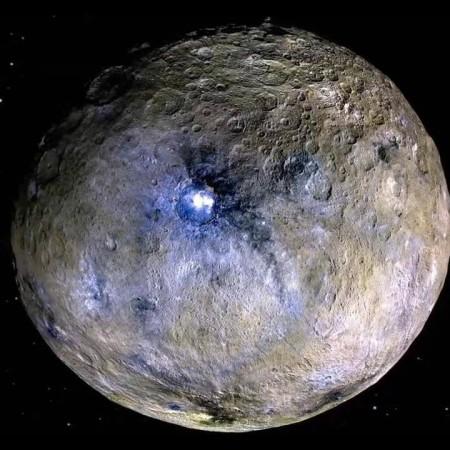
In 2017, NASA's Dawn space probe discovered the presence of carbon compounds in the asteroid belt on Ceres. After the discovery, many experts predicted that the presence of these carbon compounds could be the indication of extraterrestrial life.
However, experts in NASA believe that the discovery of carbon compounds is not sufficient enough to announce the presence of potential alien life on Ceres. But now, a team of researchers at the Brown University have suggested that NASA has underestimated the presence of carbon compounds on Ceres.
Alien life on Ceres?
The researchers, during their study, re-analyzed the space agency's data and argued that Ceres which has an abundant amount of frozen water contains a higher amount of organic matter than NASA assumed earlier. As per experts, the presence of organic compounds in space not a solid proof to substantiate the presence of alien life, but without these compounds, life cannot survive.
The study report published in journal Geophysical Research Letters made it clear that the organic compounds in Ceres will be four to five times more than NASA's previous assumptions.
"What this paper show is that you can get really different results depending upon the type of organic material you use to compare with and interpret the Ceres data. That's important not only for Ceres but also for missions that will soon explore asteroids that may also contain organic material," said Hannah Kaplan, the lead researcher who conducted this study.
NASA's Dawn mission and Ceres
NASA's Dawn space probe made use of the Visible and Infrared (VIR) Spectrometer to discover the presence of carbon compounds. After obtaining the idea of Ceres' chemical composition, scientists at NASA compared the data with organic rocks on Earth to develop a standard which can be used to conduct future scans.
During the research, Hannah Caplan and his team made use of extraterrestrial meteorites as the go-to comparison standard, and the results were pretty different when compared to NASA's finding.
The research team found that as much as 40 to 50 percent of the spectral signal is explained by organics when compared to six to 10 percent reported by NASA analysis.
The research team is now planning to learn more about the reasons which resulted in the abundance of organic compounds in Ceres.
The new revelation from the Brown University research team came just a few days after NASA announced the presence of organic compounds and methane on Mars.
After NASA announced this discovery, conspiracy theorists including Tyler Glockner who runs the YouTube channel 'Secureteam10' revealed that aliens are living below the Martian surface.

















